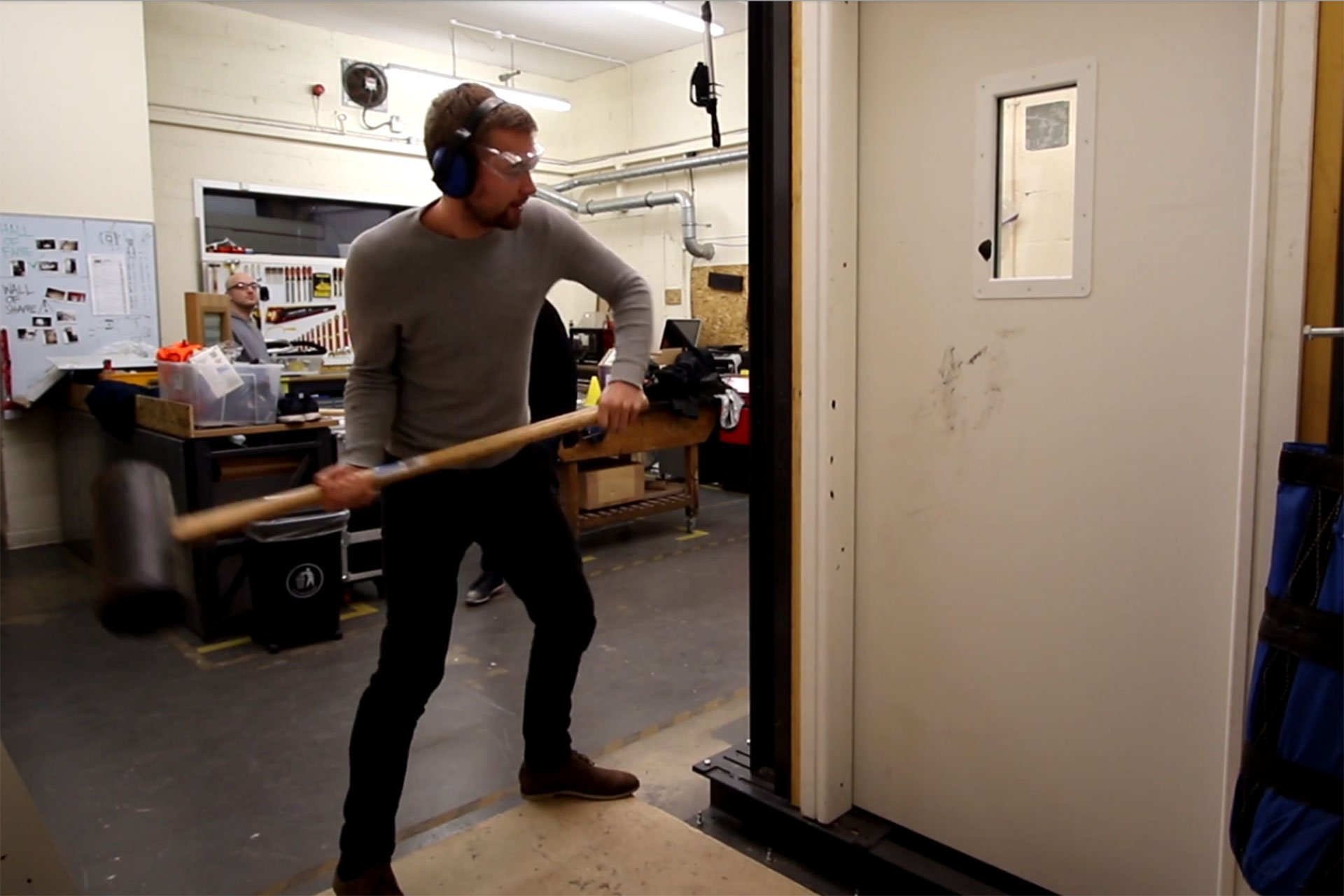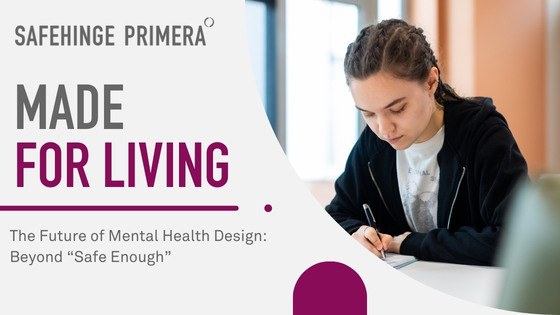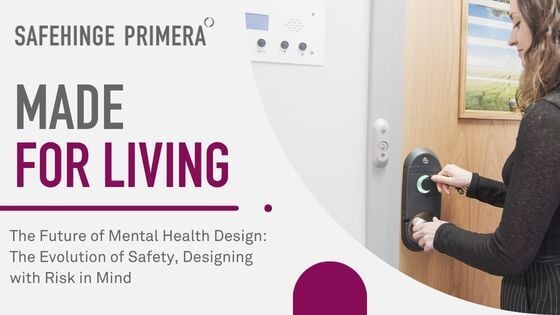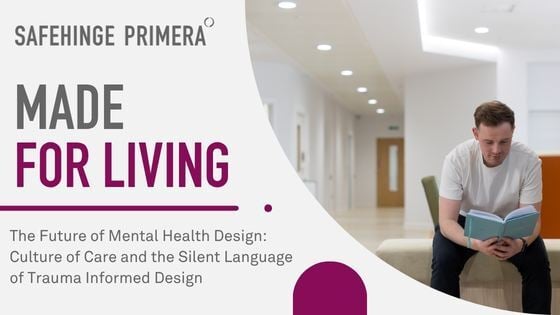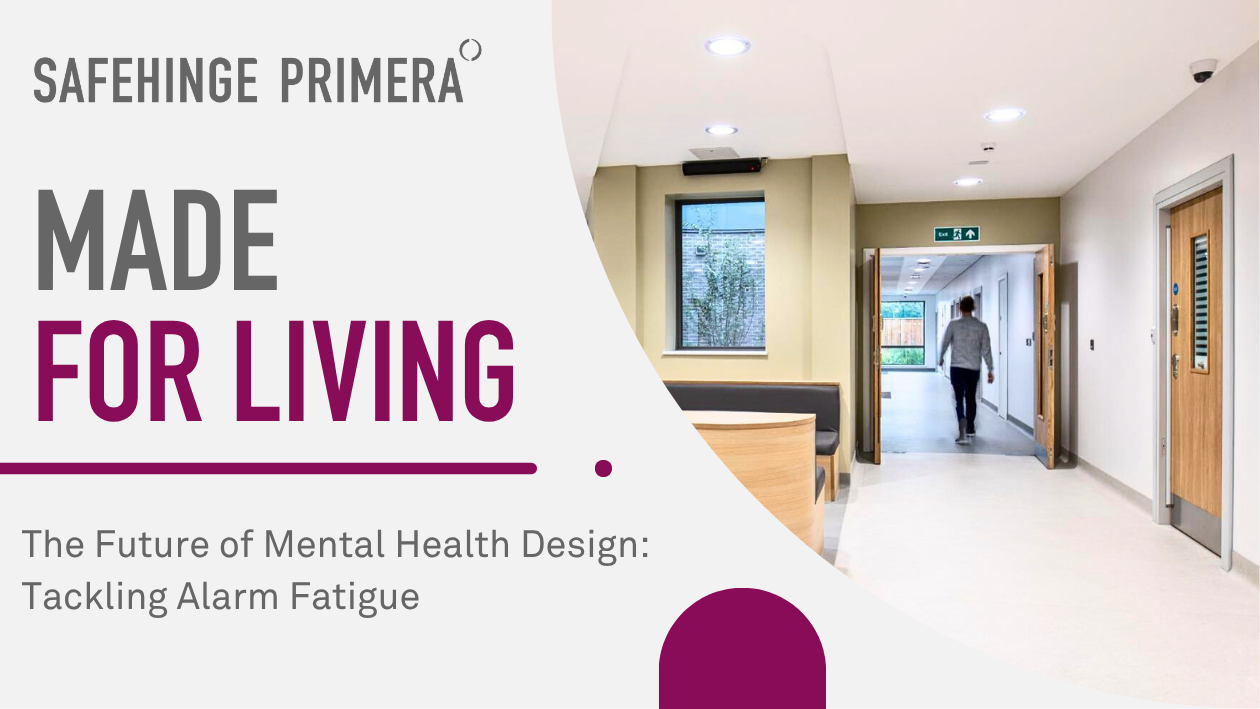I'm one of the product design engineers and lead much of the testing at Safehinge Primera, applying our engineering-led approach to develop testing procedures that are repeatable and evidence-based.
By the time our products are used in live environments, they've been methodically and rigorously tested in a series abuse scenarios – so you can be truly confident in them and know they're safe, robust and easy to use.
I've written this article to share the recent testing of our seclusion room door, and to examine our role in developing a national set of standards.
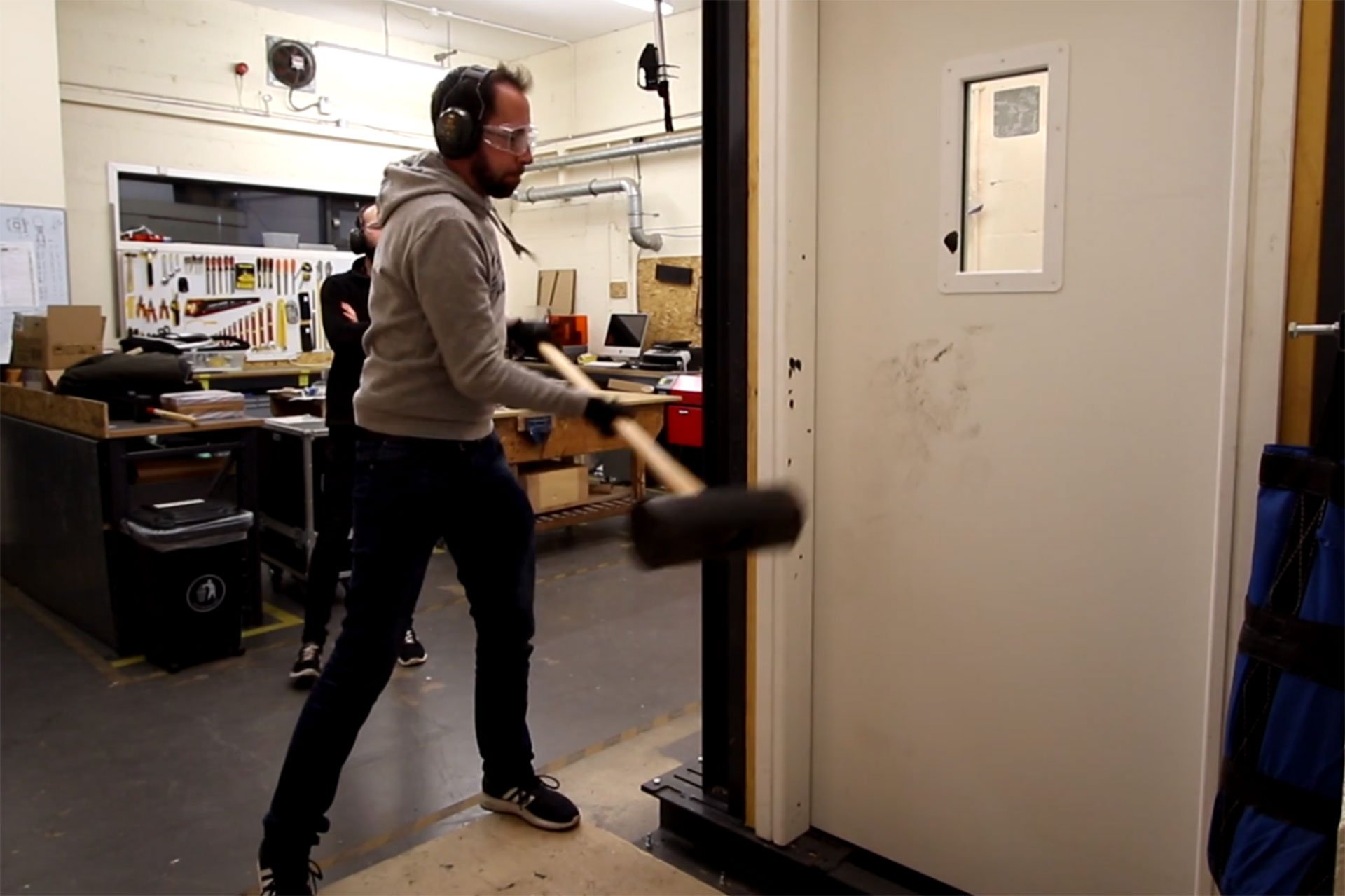
Testing our seclusion room door
Just recently, we carried our testing on our seclusion room door – designed for extremely abusive situations where service users are at their most vulnerable, these doors must withstand high levels of aggression for extended periods of time.
To ensure this, our testing process involved more than 100 impacts with a paving maul in the same location of the door (Medium Secure test calls for 10 impacts). Hitting the same part each time, we believe, more realistically simulates the real-world environment – where a service user works out their aggression by kicking a door repeatedly.
Methodical, engineering approach to testing
Our abuse testing rig at our Glasgow HQ has been designed to allow us to test to Department of Health guidelines. Following a methodical approach, we test our products, and if we see any failures, we go back to the drawing board and then we test them again and again.
While current industry guidance only focuses on two or three tests, our testing methodology covers 12 mechanical and abuse tests, plus fire and acoustic, covering:
- European Standards for resistance to static torsion, vertical loading and impact/abuse (EN947, EN948, EN949)
- Fire and smoke compliance (BS476:22, BS476:31.1)
- Department of Health Environmental Design Guide: Adult medium secure services
- DHF: TS001 (anti-ligature)
- Acoustic rating (BS EN ISO 140-3)
- Series of anti-barricade manipulation tests based on Safety Note
Developing a set of national standards
In fact, we're so passionate about testing that, as a member of Design in Mental Health Network Board, our co-founder Philip Ross is taking the lead on testing and accreditation at the Network. Currently, he's working with fellow board member Jeff Bartle to create a national set of standards that all Mental Health manufacturers and estates teams can use.
A number of manufacturers and estates managers have been involved in this process, bringing together the collective experience to develop a transparent means of assessing one product against another.
According to Philip, "Because there's no national set of standards, Trusts, and other healthcare providers routinely test products themselves. That means that the same products are tested by different organisations all the time, instead of just once – like fire testing. By creating a national set of standards, healthcare providers will be able to compare products quicker and easier. Ultimately, it'll save time and money that can be spent on improving recovery. "
